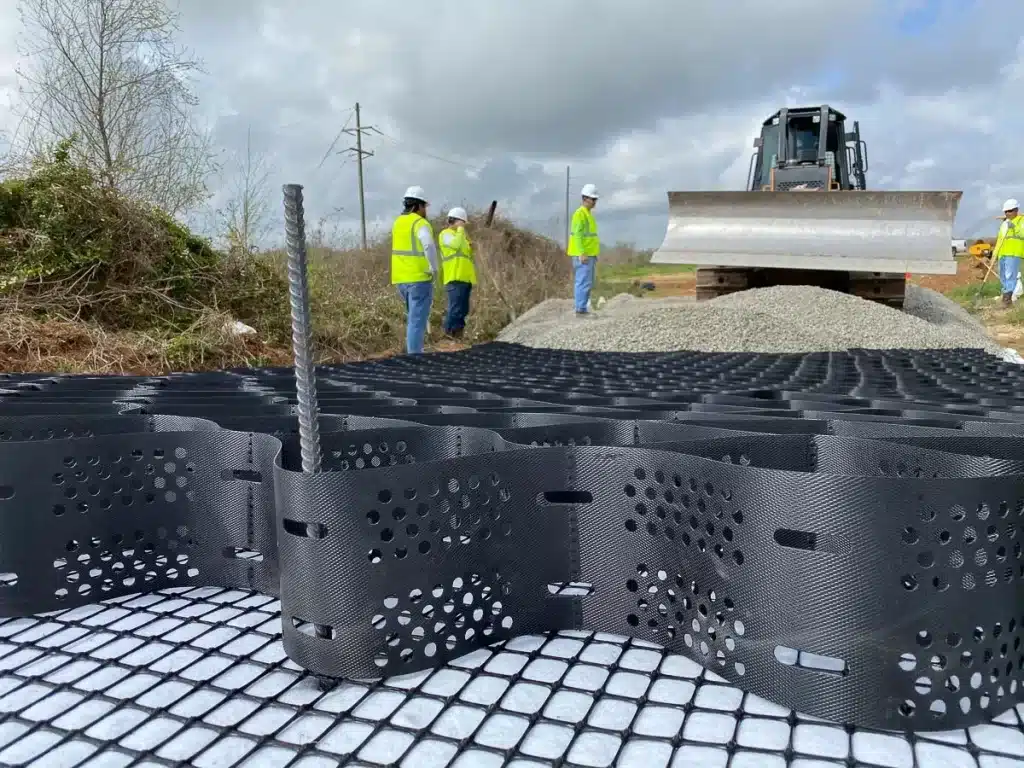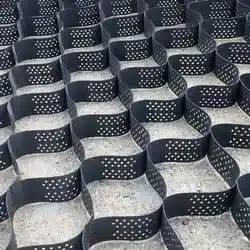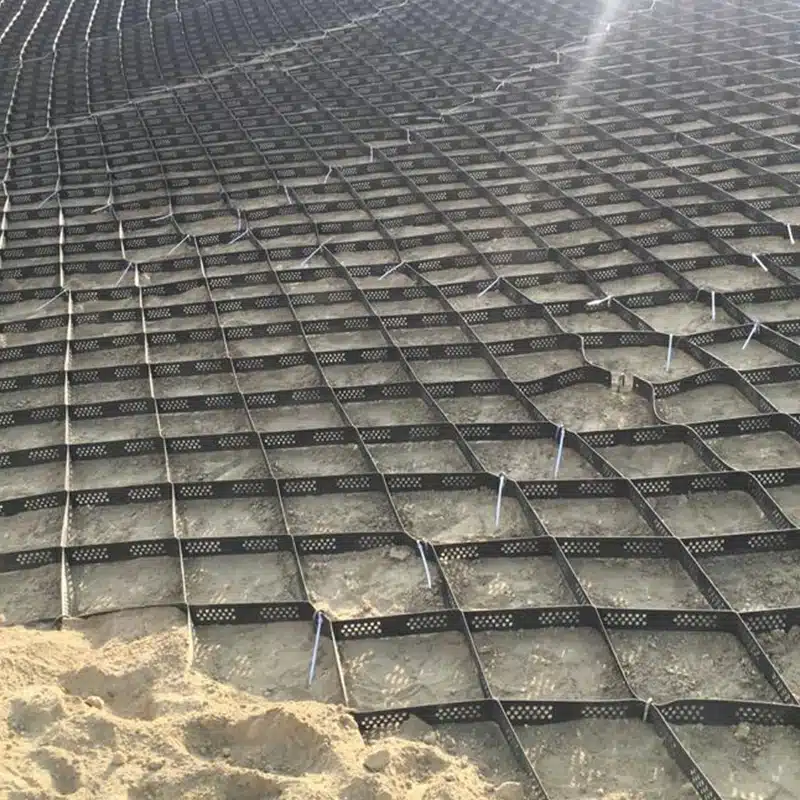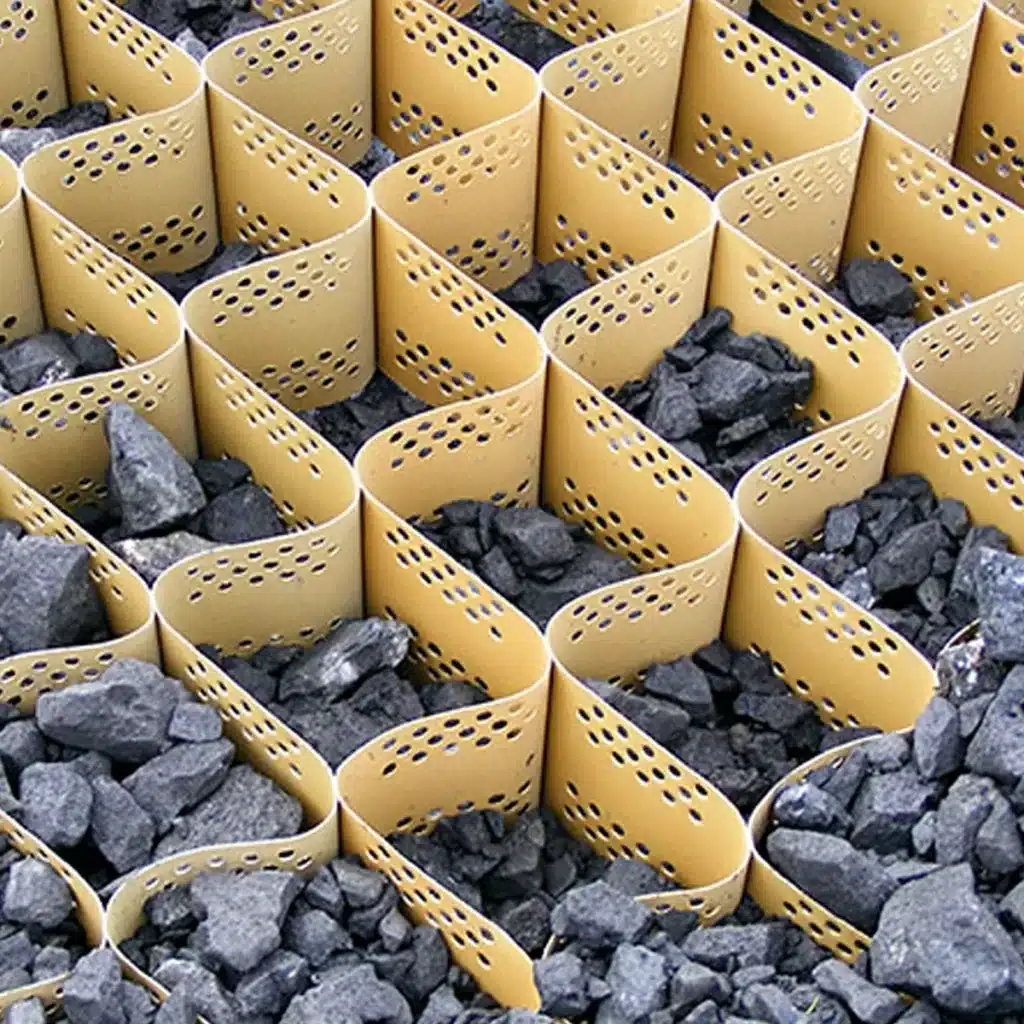+86-159 9860 6917
info@geofantex.com
geofantex@gmail.com
+86-400-8266163-44899
In the battle against soil erosion, geocell technology emerges as a formidable ally. Geocells, three-dimensional cellular structures constructed from high-density polyethylene or other durable materials, provide a versatile solution for effective soil erosion control. These innovative systems are specifically designed to stabilize soil, prevent erosion, and enhance load-bearing capacity, making them an invaluable asset in various applications, from slope stabilization to riverbank protection. By harnessing the power of geocells, we can fortify the natural environment and protect critical infrastructures, ensuring a sustainable and erosion-free future.

What is a geocell for erosion control?
Geocells, constructed as three-dimensional cellular structures using high-density polyethylene (HDPE) or other robust materials, closely mimic honeycombs and are interlinked to create a flexible, perforated grid. These geocells are specifically engineered to be filled with soil, aggregate, or concrete, and when positioned on slopes, embankments, or other erosion-prone areas, they are used for soil stabilization by making the soil stronger. In doing so, they effectively prevent erosion, boost load-bearing capacity, and offer an efficient solution for erosion control.
What is the difference between Geogrid and Geocell?
Both geogrids and geocells are geosynthetic materials used for soil reinforcement, but they differ significantly in structure and function. The geogrid is typically a two-dimensional grid, focusing on improving soil stability and tensile strength. In contrast, the geocell is a deep, three-dimensional mesh structure, while the geogrid is typically two-dimensional, with interconnected cells that are filled with soil to create a reinforced composite. Geogrids are primarily employed to enhance the mechanical properties of the soil, whereas geocells serve multiple functions, including erosion control, soil confinement, load distribution, and, importantly, soil reinforcement.
What are the applications of Geocells for soil reinforcement?
Geocells offer a wide array of applications in soil reinforcement, enhancing the bearing capacity and shear strength of soft soil under the different types of civil engineering structures, which include:
- Slope Stabilization: Geocells play a pivotal role in preventing soil erosion and landslides on slopes, hillsides, and embankments.
- Erosion Control: Geocells are a crucial tool in preserving riverbanks, shorelines, and coastal areas, effectively combatting erosion and safeguarding the environment.
- Retaining Walls: Geocells contribute significantly to enhancing the stability of retaining walls, making them an excellent choice for applications in residential and commercial construction.
- Road Construction: Geocells are instrumental in improving load-bearing capacity, reducing settlement, and extending the service life of roads and pavements.
- Mining: Geocells are an invaluable resource in mining operations, as they are used to reinforce haul roads and containment structures, thereby enhancing overall operational efficiency and safety.
What is the effect of geocell on the Behaviour of soil?
Geocells have a significant influence on soil behavior as they:
- Increase Stiffness and Strength: Geocells enhance the stiffness and strength of soil, effectively increasing its resistance to sliding and deformation, while also reducing vertical settlement and lateral spreading of stress.
- Reduce Erosion: Geocells play a crucial role in minimizing surface erosion by stabilizing the soil and controlling water flow.
- Enhance Load Distribution: Geocells distribute loads more evenly, thereby reducing stress on the soil and preventing settlement.
- Improve Soil Compaction: Geocells facilitate better compaction of fill material, ultimately leading to a more stable foundation.
- Extend Service Life: Geocells are instrumental in preserving the long-term integrity of soil, structures, and roads, ensuring their durability and performance over time.

In conclusion, geocells are versatile geosynthetic products that are instrumental in soil erosion control and reinforcement. Their unique three-dimensional structure, in contrast to geogrids, allows them to offer a comprehensive solution for a wide range of applications. Geocells positively influence soil behavior, making them a valuable asset in construction, environmental protection, and infrastructure development.



Get Free Sample
We’ll respond as soon as possible(within 12 hours)






















